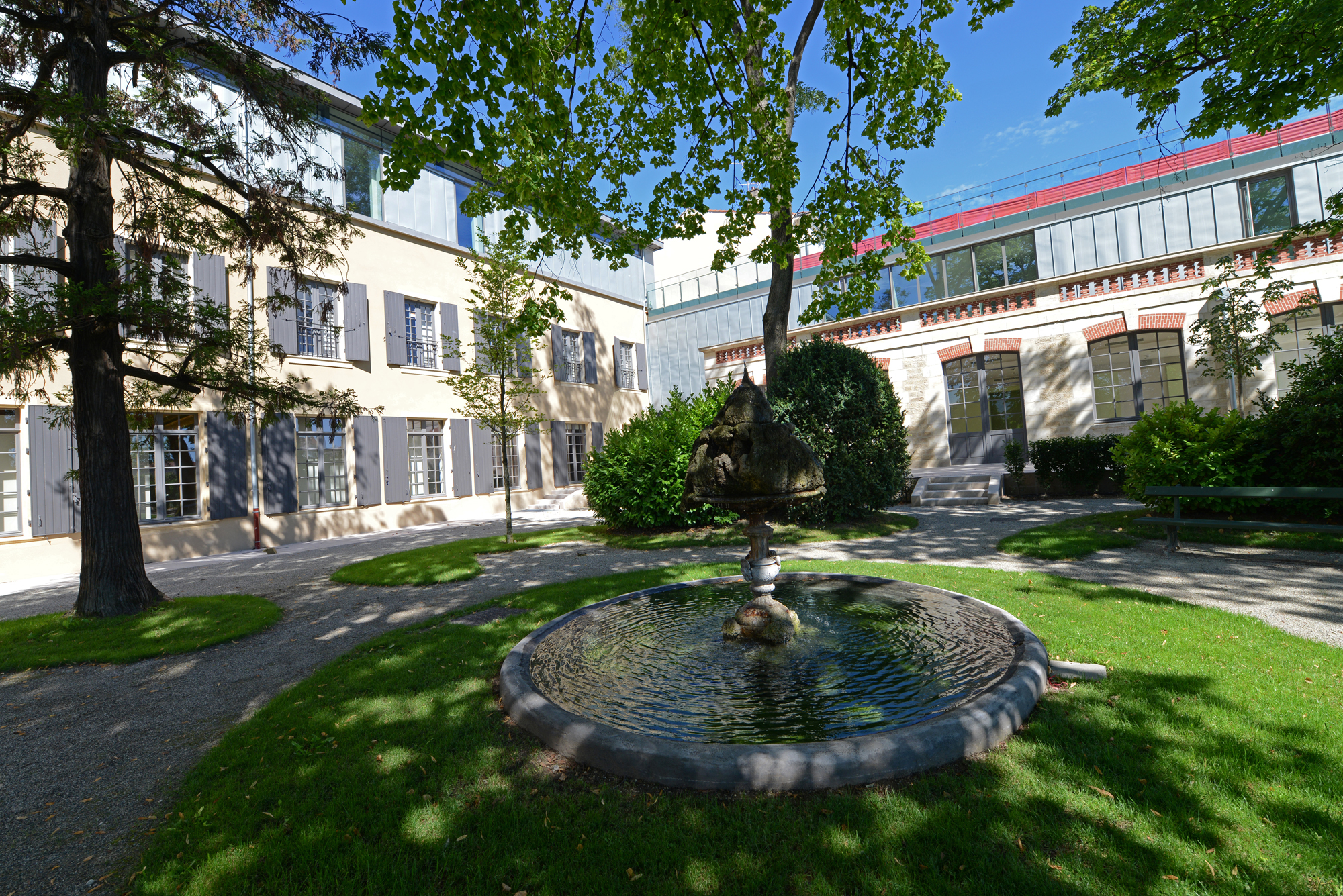The garden
Information
The history of the Episcopal palace garden is not well known. On Belleforest’s Cosmography, a representation of the city of Valence in 1575, several trees can be seen to the south of the palace, against the outline of the rampart, attesting to the presence of a space devoted to greenery.
The first definite presence of a private garden dates from the 18th century. The plan of Valence drawn up on 20 August 1727 by Nègre, military engineer for the king, attests to its creation to the south of the Episcopal palace. In the foreground a French-style garden can be shown with geometrical and symmetrical hedges. It was situated in its current location: on the edge of the rampart, at the southern tip of what was then the palace complex’s main building. It also included an orchard to the east, and undoubtedly a market garden as well.
This period corresponds to the episcopacy of Monseigneur Milon de Mesme, bishop of Valence from 1726 to 1771. It is to him that we owe the beautiful classic layout of the palace, with its courtyard and staterooms. Did he create the garden, or simply rework it? We do not have the sources to answer this question with certainty, but it seems that he did add an orangery and perhaps a first greenhouse.
18th-century bishops seemed to appreciate the calm and freshness of gardens. It was Milon de Mesme’s successor, Monseigneur Fiacre François de Graves, who created the tree-lined walk to the south of the Episcopal palace garden, on the other side of the rampart. This walk, then called the Promenade de Beauregard, is known today by every resident of Valence as the Champ de Mars.
The garden’s appearance changed in the 19th century, moving from its French style to a more picturesque style inspired by English gardens, which it would retain until the present day. In the same period, a winter greenhouse was installed on the terrace extension east of the garden, to your left.
Both the garden and the terrace have been listed sites since 26 November 1941. The garden includes several particularly rare species of trees, including a Cryptomeria (an ornamental conifer used in gardens).
Suivez-nous sur les réseaux sociaux
Inscription newsletter







